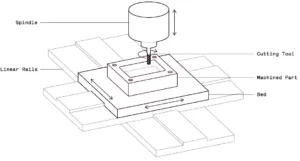CNC machining is a manufacturing process that uses computerized controls and machine tools to remove layers of material from a workpiece and produce a custom-designed part. More specific, the term CNC stands for computer numerical control. In other words, a computer program instructs the machine how to perform the machining operations. <Therefore, this fabrication process can be used for a wide range of materials, such as metals, plastics, wood, glass, foam, and composites, and for various industries that require high precision and accuracy, such as aerospace, telecommunications, medical, and automotive.
CNC machining is a subtractive process, which means that it creates the desired shape by removing material from the workpiece. To clarify, this is different from additive processes, such as 3D printing, which create the shape by adding material layer by layer, or formative processes, such as injection molding, which deform and displace the material into the shape.
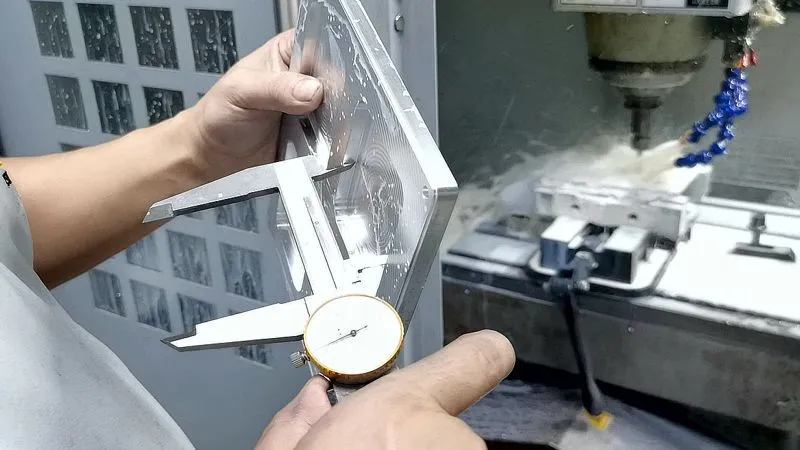
Here’s a simplified explanation of how CNC machining works:
-
Design:
The process begins with a digital design of the part that needs to be manufactured. This can be done using computer-aided design (CAD) software.
-
Programming:
The design is then converted into a machine-readable format by creating a CNC program. More specific, the program contains instructions that specify the toolpaths, cutting speeds, tool changes, and other parameters required to produce the desired part.
-
Machine Setup:
The operator prepares The CNC machine for operation by loading the program into the machine’s computer control unit. In this way, the machine selects the appropriate cutting tools and installs them in the machine’s tool holder.
-
Material Preparation:
The raw material, typically in the form of a solid block or sheet, is securely fixed to the machine’s worktable or vice.
-
Machining Operations:
Once the setup is complete, the CNC machine executes the programmed instructions, as intended. The computer control unit precisely moves the cutting tools along the specified paths, cutting, shaping, drilling, or milling the material to create the desired part.
-
Tool Changes:
If the part requires different cutting tools for different operations, the CNC machine automatically changes the tools as programmed, allowing for a variety of machining operations without manual intervention.
-
Monitoring and Quality Control:
During the machining process, sensors and monitoring systems can be employed to ensure accuracy and detect any issues or deviations. This helps maintain the desired tolerances and quality of the finished part.
-
Finishing Operations:
After the primary machining is completed, additional finishing operations like deburring, polishing, or surface treatments may be performed manually or using specialized machines.
Advantages of CNC Machining
CNC machining has several advantages over other manufacturing processes, such as:
- There is the ability to produce complex shapes and geometries that are difficult or impossible to achieve with manual machining or other methods.
- High accuracy and repeatability, as the machine follows the exact instructions of the computer program without human error or variation.
- Production of parts with smooth surface finishes and tight tolerances, which are important for the functionality and aesthetics of the product.
- It is a cost-effective process for low to medium volume production runs, as it reduces the need for manual labor, tooling changes, and waste material.
Limitations of Milling and Turning
CNC machining also has some limitations and challenges, such as:
- CNC machining is expensive for high volume production runs, as it requires a high initial investment in machines, software, and maintenance.
- There is waste of material, as it removes a large amount of material from the workpiece that cannot be reused or recycled.
- Machines limit the size and shape of the workpiece and the machine tool, as some parts may be too large or complex to fit or be machined by the available equipment.
- External factors effect the machining process. More specific, temperature, humidity, vibration, and wear and tear of the machine components. As a result, this affects the quality and performance of the machining process.
Types of CNC Machines
There are many types of CNC machines that can perform different kinds of machining operations. Some of the most common types are:
-
CNC milling machines:
These machines use rotary cutting tools called milling cutters. They remove material from the workpiece by moving it along multiple axes. Therefore, CNC milling machines create flat or curved surfaces, holes, slots, pockets, and other features on the workpiece. In addition, they can also perform drilling and tapping operations.
-
CNC turning machines:
Here we use stationary cutting tools to remove material from a rotating workpiece by moving it along one or two axes. As a result, lathes create cylindrical or conical shapes, such as shafts, rods, screws, bolts, and pipes. In addition, they also perform boring and threading operations.
-
CNC drilling machines:
These machines use rotating cutting tools called drill bits to create holes in the workpiece by moving it along one axis. More specific, CNC drilling machines make holes of different sizes and depths on various materials. They also perform reaming and countersinking operations.
-
CNC grinding machines:
These machines use abrasive wheels or belts to remove material from the workpiece by rubbing it against them. This machinery creates smooth surface finishes and precise dimensions on various materials. They also perform sharpening and polishing operations.
Other types of CNC machines include CNC routers, CNC lathes, CNC plasma cutters, CNC laser cutters, CNC waterjet cutters, and CNC EDM (electrical discharge machining) machines.
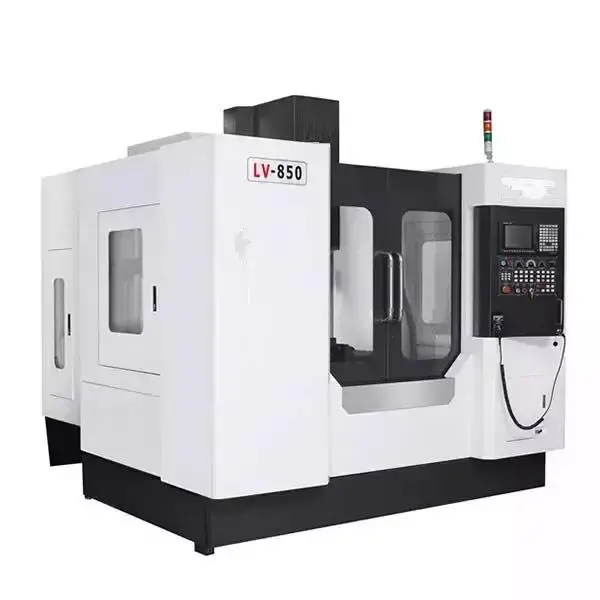
Parts Made by the Machining Process
CNC machining produces a wide variety of parts for different applications and industries. Some examples are:
-
Aerospace parts:
Fabrication of complex and precise parts for aircrafts, rockets, satellites, and other aerospace vehicles. These parts include turbine blades, engine components, landing gear, wing flaps, and fuselage panels.
-
Medical parts:
Manufacturing intricate and accurate parts for medical devices, implants, instruments, and equipment. These parts include surgical tools, dental implants, orthopedic implants, prosthetics, and pacemakers.
-
Automotive parts:
Production of durable and functional parts for cars, trucks, motorcycles, and other vehicles. These parts include engine blocks, pistons, cylinders, gears, shafts, brake discs and suspension components.
-
Aerospace parts:
CNC machining creates complex and precise parts for aircrafts, rockets, satellites, and other aerospace vehicles. These parts include turbine blades, engine components, landing gear, wing flaps, and fuselage panels.
-
Medical parts:
We us CNC machining to produce intricate and accurate parts for medical devices, implants, instruments, and equipment. These parts include surgical tools, dental implants, orthopedic implants, prosthetics, and pacemakers.
-
Automotive parts:
CNC machining makes durable and functional parts for cars, trucks, motorcycles, and other vehicles. These parts include engine blocks, pistons, cylinders, gears, shafts, and
-
Electronics parts:
CNC machining produces small and complex parts for electronic devices, gadgets, and equipment. These parts include circuit boards, connectors, switches, buttons, and casings.
-
Industrial parts:
Milling and turning is suitable to make large and heavy parts for industrial machinery, equipment, and tools. These parts include shafts, bearings, bolts, flanges, and valves.
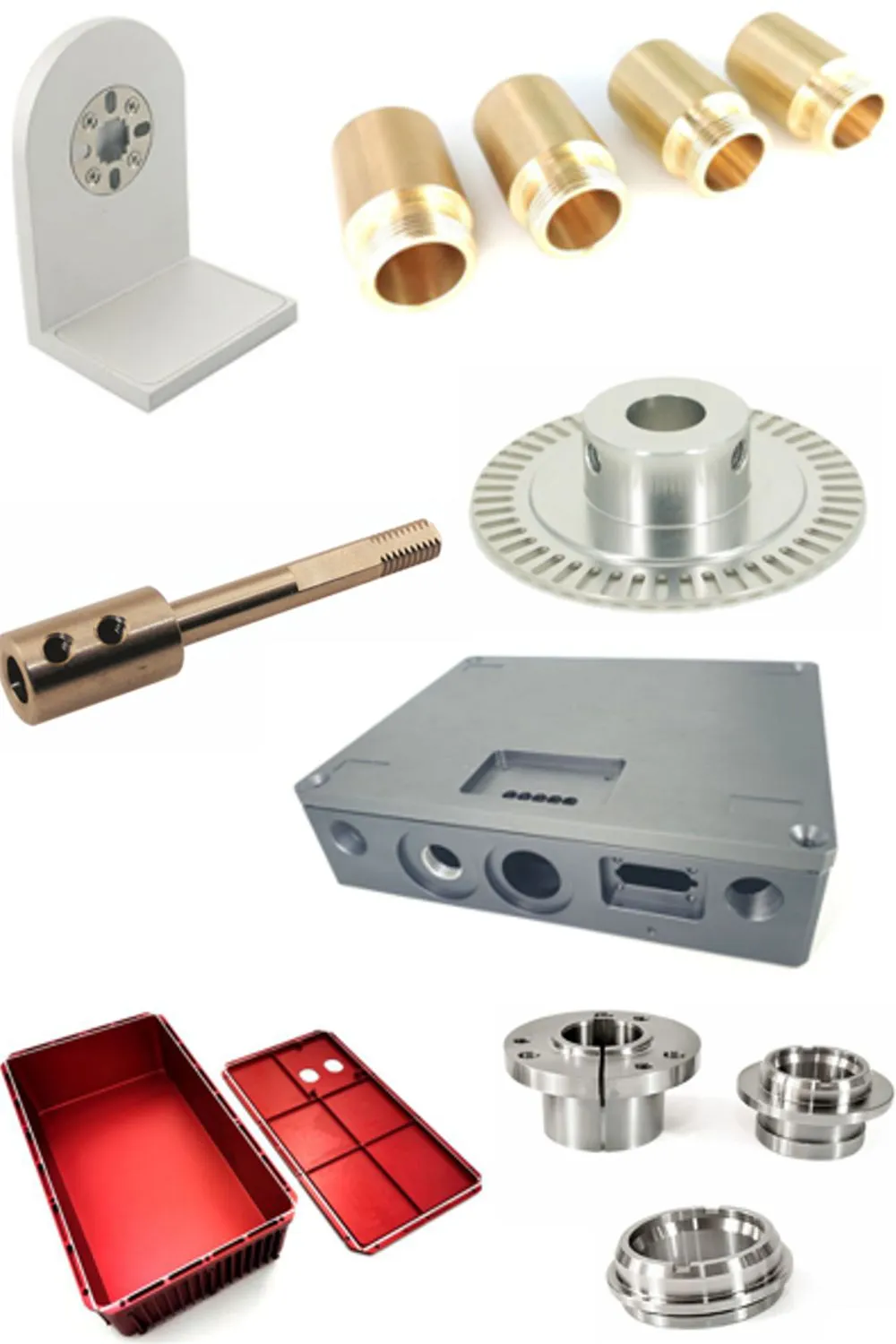
Processed Materials
CNC machining works with a wide range of materials, depending on the type of machine and the desired properties of the part. Some of the most common materials are:
-
Metals:
Metals are strong, durable, and resistant to heat and corrosion. In addition, CNC machines process them to high precision and accuracy. In addition, various surface finishes and coatings are possible. Some examples of metals used for CNC machining are aluminum, steel, stainless steel, brass, copper, titanium, and nickel alloys.
-
Plastics:
Plastics are lightweight, flexible, and easy to shape. They are machined to smooth surface finishes and complex geometries. In addition, they have various colors and textures. Some examples of plastics used for CNC machining are ABS, nylon, polycarbonate, polyethylene, PVC, and acrylic.
-
Wood:
Wood is natural, renewable, and biodegradable. Also, it can be machined to fine details and patterns, and have various stains and finishes. Some examples of wood used for milling and turning are oak, maple, pine, birch, and plywood.
-
Composites:
Composites are materials that combine two or more different materials to create a new material with enhanced properties. They can be machined to high strength and stiffness, and can have various characteristics and appearances. Some examples of composites used for CNC processing are carbon fiber, fiberglass, Kevlar, and metal matrix composites.
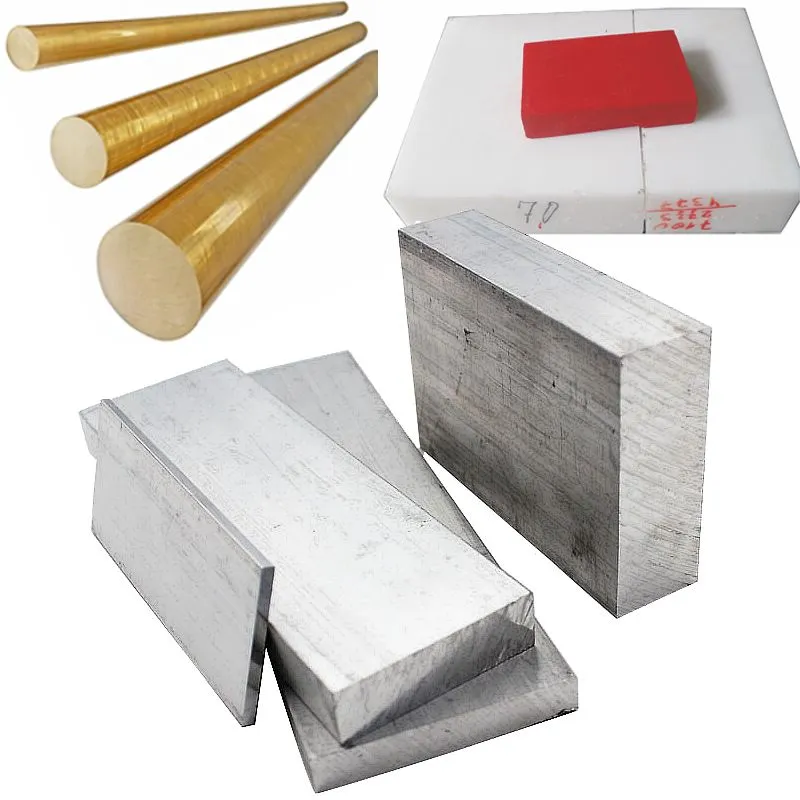
Conclusion
CNC machining is a manufacturing process that uses computerized controls and machine tools to remove material from a workpiece. This enables us to produce and custom-designed parts. More specific, the industry uses it for manufacturing a wide range of components that require high precision and accuracy. In addition, there are several advantages over other manufacturing processes. Some advantages are complexity, repeatability, surface finish, and cost-effectiveness for low to medium volume production runs. However, it also has some limitations and challenges, such as waste material, size and shape constraints, external factors, and high initial investment for high volume production runs.
There are many types of machinery that can perform different kinds of machining operations. Some of the most common types are milling and turning machines, drilling machines, and grinding machines. The manufacturing process produces a wide variety of parts for different applications and industries. Some examples are aerospace parts, medical parts, automotive parts, electronics parts, and industrial parts. In addition, CNC machining works with a wide range of materials, depending on the type of machine and the desired properties of the part. Some of the most common materials are metals, plastics, wood, and composites.
